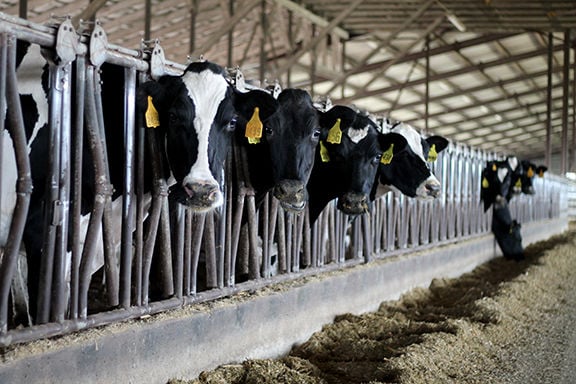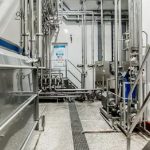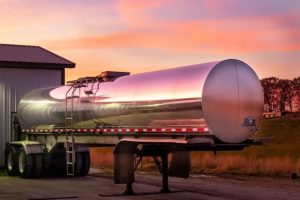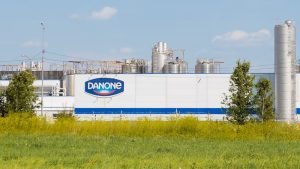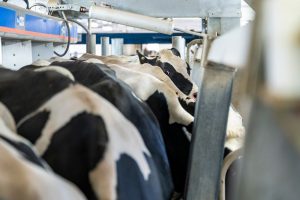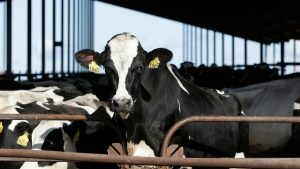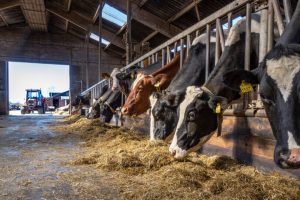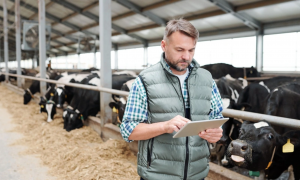
From 2014 to 2015, the United States experienced one of the largest animal disease outbreaks in history. Highly pathogenic Avian Influenza, or the “bird flu,” had spread to over 21 different states, resulting in the depopulation of roughly 50 million commercial birds.
Now, in 2024, the United States again faces an Avian Influenza outbreak, but this time, poultry are not the only species being impacted.
The current outbreak began in February 2022, and approximately 100.71 million birds have been affected in 48 states since. While a drastic number of birds are being affected this time around, cattle have also been discovered to contract this virus.
In March 2024, Avian Influenza H5N1 was detected in cattle for the first time in history at a dairy in Texas. Since, there have been at least 172 confirmed cases of infected dairy cows across 13 states, including Kansas and Oklahoma. Arkansas and Missouri are yet to report any cases. There have been no confirmed cases of H5N1 in beef cattle.

According to Brook Duer with the Pennsylvania State Center for Agriculture and Shale Law, a mutation of the H5N1 subtype of the Influenza strain A virus occurred, causing the virus to now impact cattle.
“The “cross-over” of a mutated genotype of the H5N1 virus in wild birds to dairy cattle was a one-time event and is not recurring,” said Duer. “So far, there has been little transmission from cattle to other species.”
While scientists still don’t know how the virus was first transmitted from poultry to cattle, transmission between cattle has been shown to occur through lactation, hence why the virus has not been seen in beef cattle.
“Primary transmission of the strain is through lactation. Suspicion is that it’s probably transferring through the milking machine; it’s not being transferred respiratory,” said Duer. “That is a very good thing because it’s not spreading fast like if it were the respiratory type, and it’s not hitting beef cattle.”
In poultry, Avian Influenza is transmitted by respiratory contact, and the virus can rapidly spread through an entire flock.
“We don’t have dairy farms where there are 100 cows who are no longer in the milking herd and are being segregated due to the detection of H5N1,” said Duer. “It’s little, tiny pockets of one to three cows at a time.”
While Avian Influenza in poultry can be quite detrimental, the virus has shown to be far less fatal in cattle. Infected cattle often recover after experiencing a decrease in milk yield. Other symptoms of H5N1 in dairy cattle are a decline in feed intake, thicker concentrated milk, lethargy, dehydration, and fever.
The USDA recommends producers isolate sick cattle from the rest of the herd and closely monitor for other infected animals. Milk from ill dairy cows should be diverted or destroyed.
“This is the furthest thing from a fatal virus to a cow, so we have a totally different approach,” said Duer.
Effective April 2024, a federal order now requires the pre-movement testing of lactating dairy cattle before crossing state lines. The order also requires all laboratories and state animal officials to report positive test results, according to the USDA.
Dairy cows aren’t the only ones contracting this mutated strain of the virus; recent reports from the CDC confirm at least five human cases of H5N1 in the United States.
“What we’re dealing with in terms of Influenza is a subtype of Influenza A, and there are four kinds of Influenza: A,B,C, and D,” said Duer. “A and B affect poultry, and A affects humans.”

According to Duer, four out of the five confirmed human cases of H5N1 were in people employed at poultry operations, not dairy employees.
Currently, the CDC believes the risk to the general public remains low. According to the USDA, those with jobs that expose them to commercial poultry may be at greater risk.
Both the USDA and FDA are quite confident about the safety of the food supply, including milk. The pasteurization process and the difference in milk use from infected cattle both ensure the complete safety and quality of milk, reports the FDA.
The USDA encourages producers to practice good biosecurity to prevent further infection. Producers should continue to monitor cattle closely and test when disease is suspected.
You can now read the most important #news on #eDairyNews #Whatsapp channels!!!
🇺🇸 eDairy News INGLÊS: https://whatsapp.com/channel/0029VaKsjzGDTkJyIN6hcP1K
